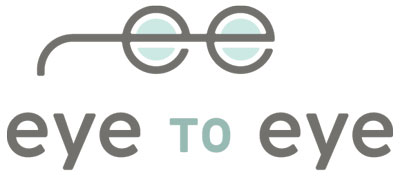Does your child need a "back to school" eye exam?
Get a jump on your back to school list—schedule your child’s back to school eye exam early this year!
Summer is in full swing, and “back to school” preparations might be a distant thought, but we are all familiar with the old adage, “time flies when you’re having fun”. Get a jump on your back to school list—schedule your child’s back to school eye exam early this year!
As the new school year approaches, parents are ensuring their children are prepared with an annual physical, immunizations and back-to-school shopping, but an annual eye exam should also be part of a student's back-to-school routine.
From ages 4 to 18, a child's vision can change frequently or unexpectedly. An annual eye exam is an important part of a student's back-to-school routine.
According to the American Optometric Association, one in four elementary-age children have undetected vision problems. If left untreated, these issues can negatively impact not only a child’s grades, but also his or her behavior in school and even personality.
The AOA has found that as much as 80% of a child’s learning is done through his or her eyes.
It’s important for parents to note that vision screenings, often done at school, are no substitute for eye exams.
Screenings typically test for how well one can see over a distance, and not much more. Comprehensive eye exams assess ocular health—where a practitioner will check for signs of eye disease—as well as vision, to determine if any lens correction is needed. These exams consist of a series of simple, non-intrusive tests that help technicians and doctors evaluate both vision and eye health.
In between annually scheduled eye exams, parents can keep an eye out for signs that a child may have a vision problem. Some of these signs are:
1. Your Child is Struggling at School
If this is the case, an undetected vision problem might be to blame. A child who is unable to see the whiteboard clearly or has a hard time focusing on the work at his or her desk will soon become frustrated.
2. Squinting
Children squint because it temporarily improves their vision. Children often squint their eyes in an attempt to see more clearly or as a reaction to strong, bright light. Squinting momentarily helps improve vision by slightly changing the shape of the eye. Sometimes, your child will not squint, but will turn their head to see better. They are essentially doing the same thing as squinting, but they are being sneaky about it. We have seen young children come in with a head turn or tilt that is actually the child just trying to see better.
3. Losing Place While Reading
Listening to your child read can reveal potential vision problems. Does your child have a hard time keeping his place while reading? Skipping lines or losing your place while reading can be a sign of a tracking problem. This is when the eye muscles do not work together and they do not track across the page at the same rate. This will make reading frustrating and will decrease comprehension, as the child gets lost in the story very easily.
4. Sitting too Close to the TV
Do you ever catch your child sitting abnormally close to the television? Have you ever caught your child with her iPad resting against her nose? Sitting very close to the television or lowering the head while reading or watching a tablet are often a sign of nearsightedness. Nearsighted children generally have clear vision at a close range and poor vision at a distance. Pulling the iPad or books closer can also be a sign of a focusing issue, which are on the rise with increased screen time at school and at home.
5. Rubbing the Eyes
Many young children rub their eyes when they are nearing bedtime. Allergies can also cause a child to frequently rub his eyes. However, rubbing the eyes is also a sign of eye fatigue and can be a sign of all types of vision problems. Astigmatism can also cause eye rubbing and excessive blinking in a child.
6. Frequent Headaches
Uncorrected farsighted children often have frontal headaches or brow aches. This is a result of the child attempting to compensate by exerting extra effort to clear their blurry vision.
If you notice any of these warning signs in your child, it's a good idea to schedule an appointment for a full eye exam.


